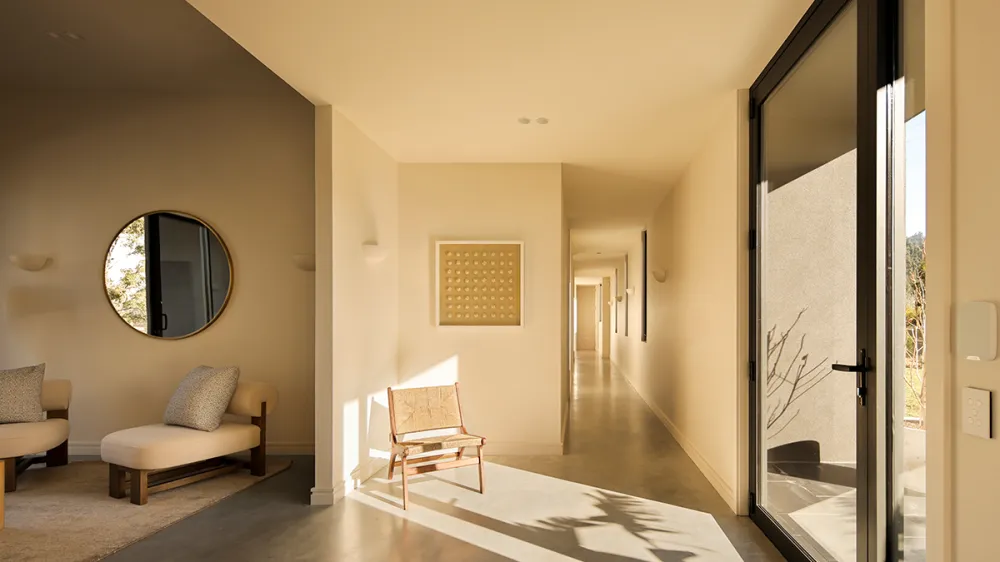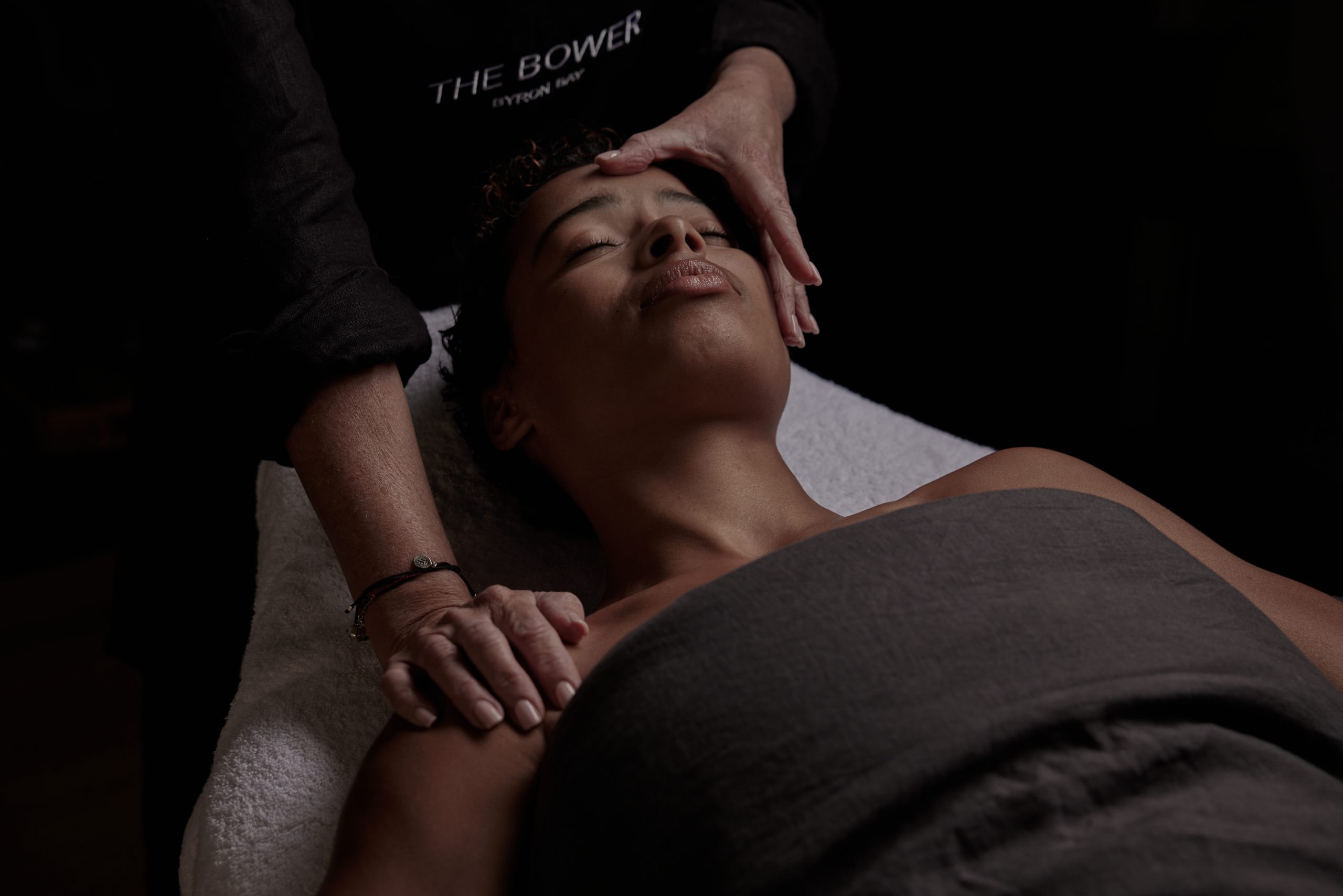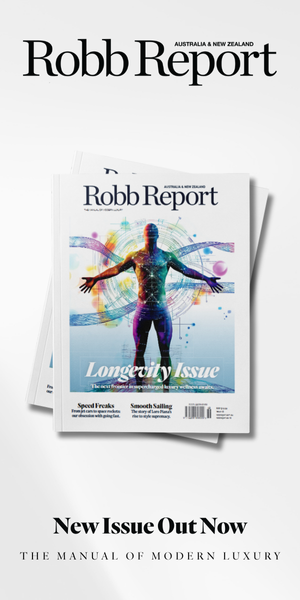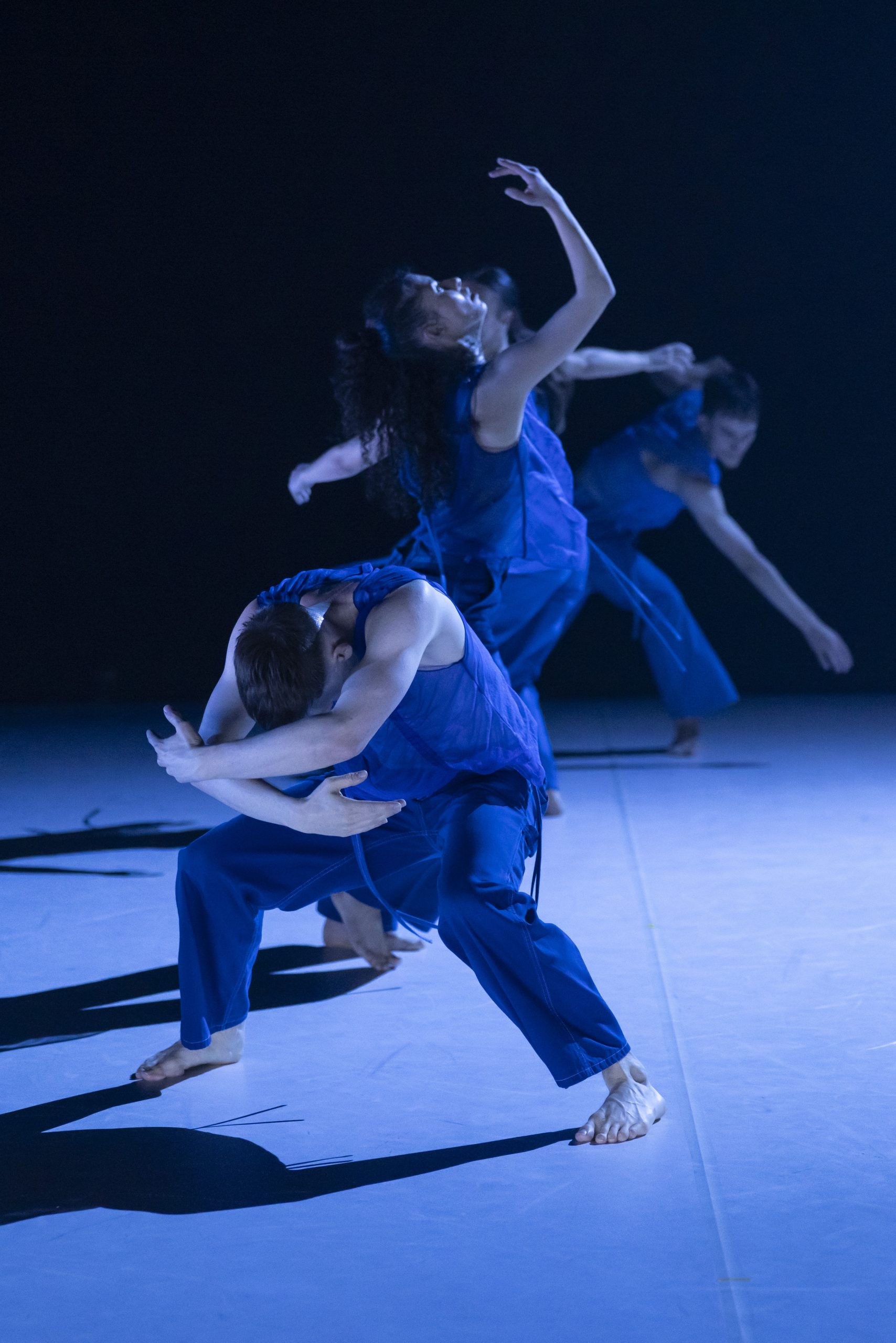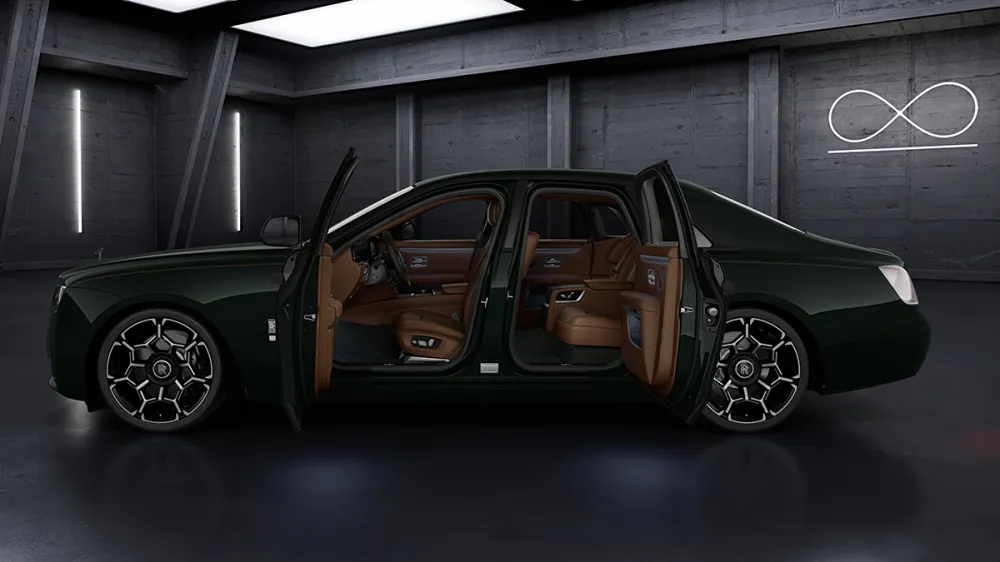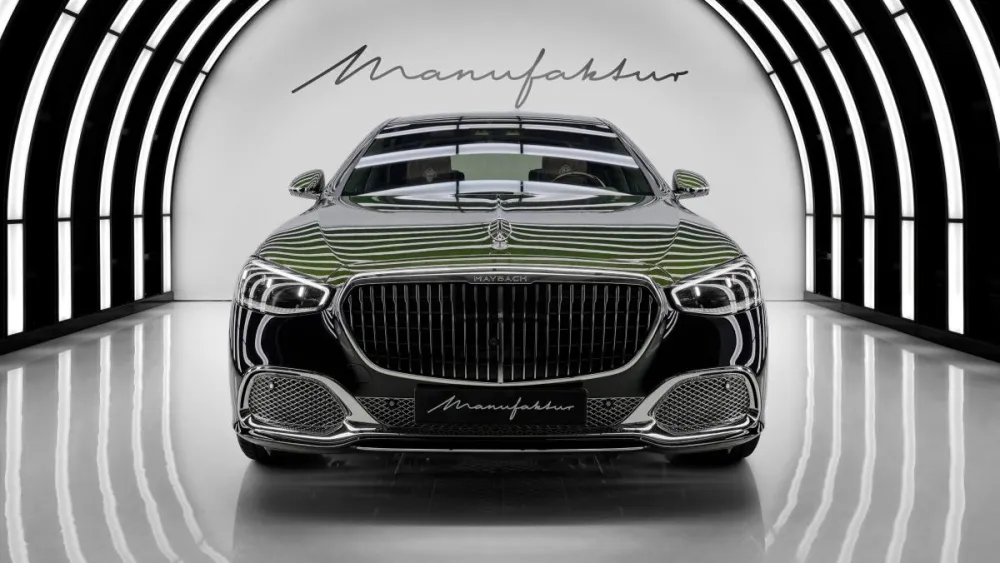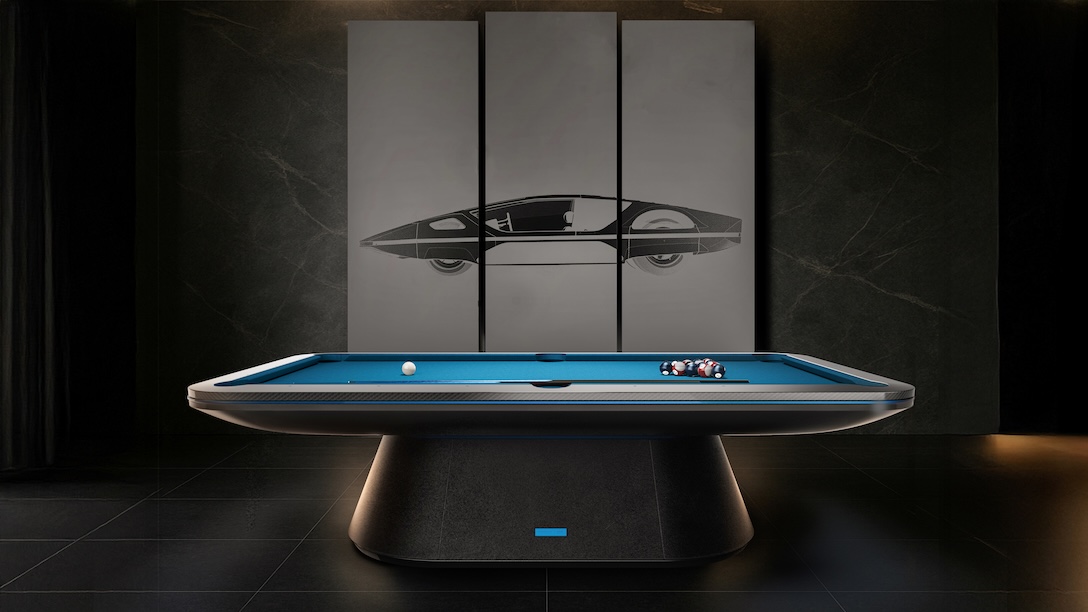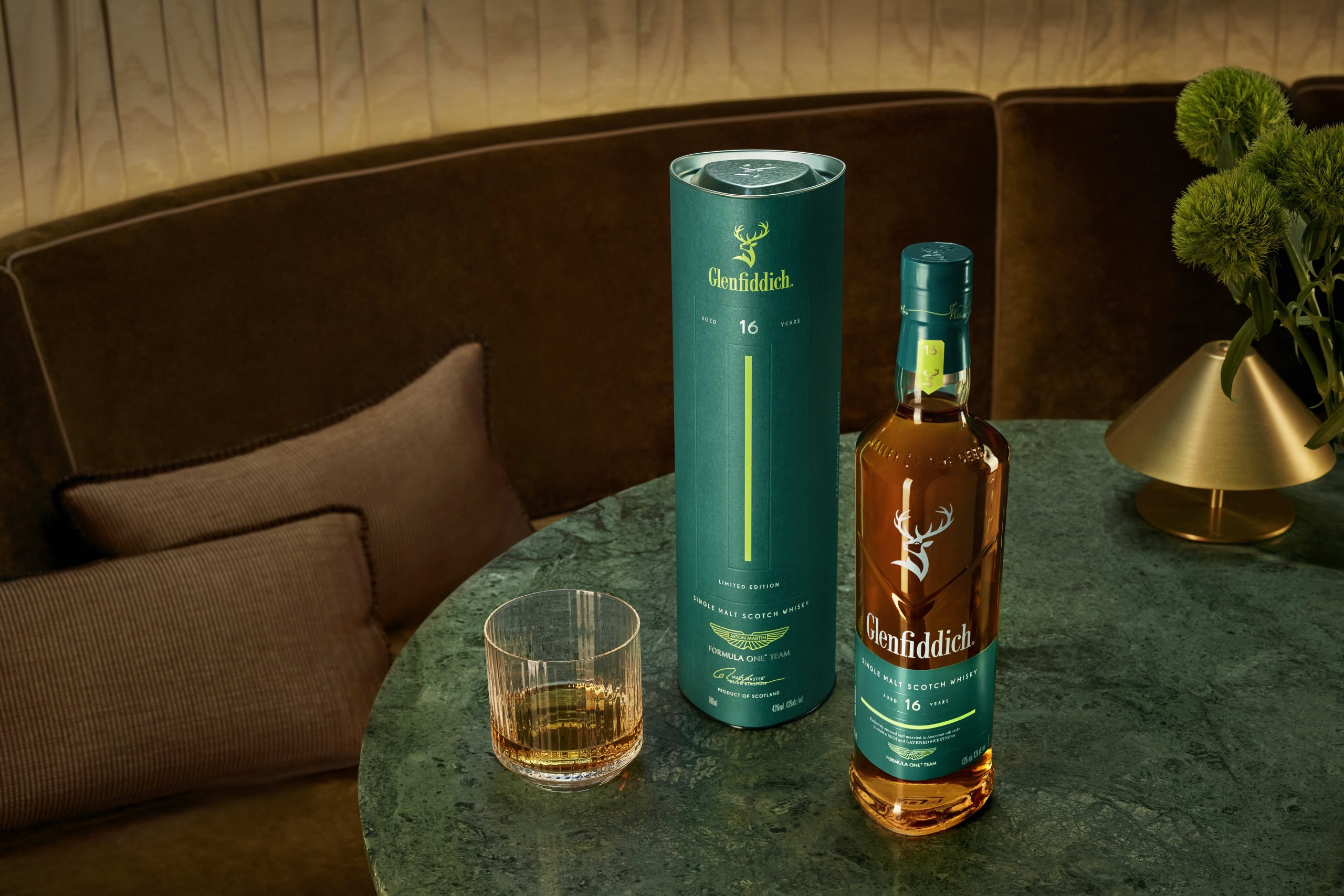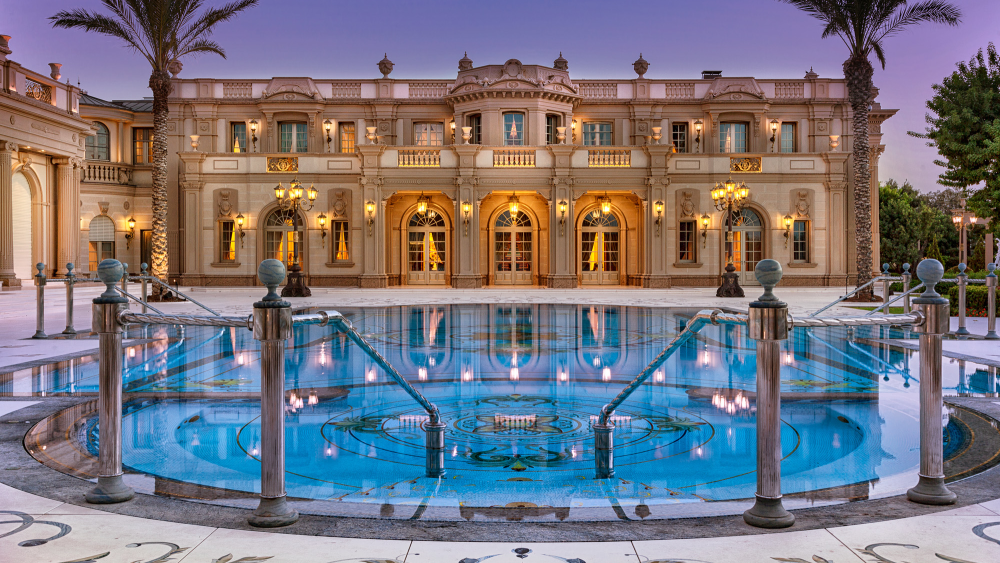
The 25 Most Expensive Homes In The World For Sale
From Hong Kong to the Hamptons, here are the priciest listings on the planet.
Related articles
Last year wasn’t exactly the best on record for the prime real estate marketplace, but even as a certain global pandemic extends further into its second year, things seem to be slowly bouncing back. Manhattan and other big cities made a rebound in 2021 as people slowly returned to in-office work, resulting in one of the Big Apple’s best years in terms of luxury sales in well over a decade. Some pandemic trends still persisted, though, like the slew of private islands that returned to market, aiming to capitalize on buyers’ desire to have a paradisal escape in their back pocket in case of future global crises.
One of the biggest changes to look out for next year is the return of buying internationally. As travel becomes more and more commonplace, you can expect to sales of more multi-million-dollar listings in major metropolises. As for 2021, there’s still plenty of incredible homes to choose from. Below, our list of the 25 most expensive homes currently on the market around the world.
25. Pumpkin Key, Florida Keys, Florida — $131 Million

Courtesy of Sotheby’s International
Pumpkin Key has been a regular on this list as it’s been taken on and off the market over the years. That being said, there’s no better time to buy a private island than now, when we all wish that we’d had one last year. Located in the Florida Keys, this particular isle isn’t too far from Miami (it’s about 10 minutes by helicopter) and already has a three-bedroom main home built on it. Also included are tennis courts, two caretaker’s cottages and a series of golf cart paths. For those who’d like to explore the surrounding waters, the on-site marina is large enough to accommodate a megayacht. You’ll likely want to add a few more structures to the 26-acre parcel though, so best start planning now if you’re interested.
24. Willow Creek Estancia, San Diego, California — $135 Million

Brent Haywood Photography
Willow Creek Estancia will appeal to many different lifestyles, but it has the most perks for equestrians, who will be drawn to its 27-stall main barn, additional eight-stall barn and sand arenas. Altogether it’s a 77-acre parcel and includes a 15-acre lake filled with bass. Also included with purchase is a bevy of sportier amenities such as a tennis court, a lap pool and a two-lane bowling alley. The main home is 1393sqm and comes with six bedrooms and seven bathrooms, if you’d rather just kick back and relax inside.
23. Stonewall Farm, Westchester County, New York — $138 Million

Christie’s International Real Estate
Stonewall Farm, which was featured on our list last year, still hasn’t found a buyer willing to shell out $138 million. The epic, 740-acre equestrian estate is Westchester County’s largest, and has produced the winning horses of 40 stakes races. The owner, Calvin Klein cofounder Barry Schwartz, developed the property for about 40 years to create room for 88 steeds. Just an hour from Belmont Park, the grounds also sport a turf race track, round pens and fenced paddocks. Not to be outdone, the 2230sqm Colonial manor house, which was designed by New York-based architect Rebecca Rasmussen, offers eight bedrooms, eight bathrooms and one of the most impressive libraries we’ve seen. There’s also a 18-metre, gardens and a butterfly house in case you get sick of the horses.
22. Padaro Lane, Santa Barbara, California — $138 Million

Blake Bronstad Photography//Douglas Elliman
Padaro Lane’s biggest perk is its private beach. Situated in the oceanside town of Carpinteria, which is part of Santa Barbara County, it’s a location that already feels relatively quiet and secluded. The existing 232sqm home here isn’t the grandest ever, so it’s really the land and location that you’re paying for. The residence sits on 4.2 acres, and the property is zoned to stable up to nine horses, which is great for the equestrian who wants to start building stables right away. Of course, you can just lounge by your own personal beach instead—that’s the more relaxing option anyway.
21. Little Pipe Cay, Exumas, Bahamas — $138 Million

Photo: Lifestyle Production Group
The Covid-19 pandemic has generated significant interest in private islands as of late. That momentum sparked Little Pipe Cay to relist, this time for $20 million more than it originally asked in 2018. The big draw here is that, unlike many other isles on the market, this one already has all of the necessary infrastructure in place, so you can move in right away. It’s a 40-acre piece of land altogether, with a 492sqm main residence that comes fully furnished. Since it’s situated in the Exumas archipelago it’s not too far off from Miami either, should you want to return to the city for a spell. However, like any private island, operational costs are a factor here—you’ll have to cough up about $2 million per year to keep it up and running. Build it out into a resort, though, and the place may just pay for itself.
20. The Atherton Estate, Atherton, California — $138 Million

Photo: Bernard Andre
Atherton, California, consistently ranks No. 1 on Property Shark’s annual Most Expensive US Zip Codes list, so it makes sense that it appears on our tally of the world’s priciest homes. The $138 million listing was for many years the summer home of Doris and Donald Fisher, the founders of clothing retailer the Gap, Inc. Over the years additional parcels have been added to the main property, so it’s eight acres of land altogether—a rarity for the area. There are two homes on the property, plus a pool, pool house and tennis court, but the beauty of having this much space is that you can develop it into whatever you want. Add an oversized garage if you’re a car collector or build another guest house for visitors. Your call.
19. Villa Theoule Sur Mer, Cannes, France — $140 Million

Côte d’Azur Sotheby’s International Realty
Another year and Villa Theoule Sur Mer still hasn’t found a buyer willing to dive in. The Cannes estate, which is characterised by a jaw-dropping 50-metre infinity pool, now wears a price tag of about $140 million. Instead of a single sprawling mansion, there are four houses at about 278sqm surrounding the pool, along with two 74sqm apartments. Each abode carries its own theme—water and light, for example—which is reflected in the design and furnishings. On top of that, the lush grounds offer 240-degree views of the coast, as well as a separate spa area and pool house. Let’s be honest, though, it’s really all about that pool.
18. El Rancho Tajiguas, Santa Barbara, California — $152 Million

Courtesy Matthew Momberger
There’s nothing better than a twofer, especially in the world of luxury real estate. Enter El Rancho Tajiguas. The $152 million ranch, which comprises 3,500 acres on Santa Barbara’s Gaviota Coast, comes with not one but two homes. Villa Della Costa and Villa Del Mare both span more than 10,000 square feet and collectively offer 10 beds, 22 baths, two pools, wine cellars, bars and theatres. The real draw is the acreage, though, which features avocado groves, persimmon orchards and plenty of cattle ranges. With barns, crop storage areas and water storage reservoirs, you’ll have all you need to support about 200 animals, plus a visitor or two.
17. Steve Wynn Mansion, Los Angeles, California — $158 Million

Courtesy of Hilton & Hyland
Casino mogul Steve Wynn relisted his Beverly Hills digs this year at a price cut—it was originally put on the market for $186 million in 2020. Nevertheless, the property is a significant piece of real estate, with a 2500sqm home and 2.7 acres of land. Wynn’s shopping it for significantly more than he originally paid: a mere $65 million in 2015. Like the former executive’s glitzy Las Vegas properties, the residence feels a bit like a resort, complete with a tennis court, swimming pool and pool house. It’s not the only home that he’s shopping at the moment either: Wynn also relisted his Vegas pad this year for $33.8 million. Care to roll the dice and make him an offer?
16. Green Gables, Woodside, California — $186 Million

Photo: Courtesy of Christie’s International Real Estate.
Sometimes it pays to keep it in the family. Take Green Gables, for instance. The storied home, which was originally built by banker Mortimer Fleishhacker back in 1911, has been passed down in the family for generations, and is now priced at a hefty $186 million. Located on 74 acres of land in Woodside, the estate comprises a main home designed by architects Charles Sumner Greene and Henry Mather Greene, along with six other dwellings. Altogether the place has 32 bedrooms, plenty of spots for entertaining and even a Michelin-star pub. The grounds are the real star here, though. The acreage includes several bike and hiking trails, along with picturesque lakes and gardens, plus a tennis court and an outdoor pool.
15. The 79th Floor at 432 Park Ave, Manhattan, New York — $186 Million

Photo: Devon Banks
It’s been an eventful year for 432 Park Ave. The supertall has always garnered criticism for its design—architect Rafael Viñoly was inspired by a metal garbage can, after all—but this time, the ire came from within the building itself. In a February New York Times report, residents spoke out about structural issues that made the 425-metre tower feel less-than-luxurious; complaints included flooding, stuck elevators and noise. In September, the condo board sued the developers over these problems.
It should come as no surprise, then, that some owners are calling it quits. One example is on the 79th floor, where a unit listed this year for a whopping $186 million. Unlike other overpriced apartments in this building (see No. 11 on this list), there’s some case to be made for the asking of this full-floor offering. It’s designed by Japanese artist Hiroshi Sugimoto, and represents his first interiors project in New York City. The photographer sourced many of the materials used for the wabi-sabi style home from Japan, such as ancient cedar planks from Yakushima Island and stone tiles from Kyoto tram stations. What’s most notable is the permanent art installation that comes with the 748sqm residence. Dubbed Ukitsobo, or Floating Inner Garden, it’s comprised of two bonsai trees standing opposite one another.
14. Le Palais Venitien, Cannes, France — $186 Million

Côte d’Azur Sotheby’s International Realty
When a property is called “the Palace,” you know it’s going to be royally good. That’s certainly the case with Le Palais in Cannes. Located on nearly six acres that overlook the Mediterranean, the palatial, 2972sqm mansion was inspired by the city of Venice and its historic architecture; think monumental columns, stately arches and fountains aplenty. Inside, the manse offers nine suites, 12 bathrooms, numerous reception rooms and an impressive wine cellar. You can also expect lavish furnishings characteristic of Venetian design. Outside, meanwhile, there’s an expansive pool, tennis court and a secluded woodland with its own lake. Who needs the Grand Canal?
13. Vatuvara Private Islands, Fiji — $214 Million

Vatuvara Private Islands
A mansion is great, but your own resort is better. Priced at $214 million, the Vatuvara Isles comes with a set of luxury hotel villas, along with a private Twin Otter aircraft to get you to and from the far-flung Fijian island. You can choose to continue running the three villas as is, or relinquish managerial duties and turn them into an exclusive oasis for yourself. In addition to this main island, the purchase also includes three other isles that are much less developed. That means there is scope to create more seaside escapes for you and your crew. It’s social distancing at its finest.
12. The Sanctuary, Santa Barbara, California — $221 Million

Jim Bartsch
The Sanctuary at Loon Point certainly lives up to its moniker. Priced at $221 million, the crown jewel of the West Coast combines the natural beauty of California with exclusive luxury living. Roughly seven miles south of Santa Barbara, the 22-acre oceanfront estate includes five individual land parcels that are connected by a private, gated road. The brainchild of hedge funder and philanthropist Bruce Kovner, the Sanctuary currently offers two mansions that span 743sqm each, but the future owner can also opt to build additional homes. Not that you will need to, of course—right now there’s a total of 10 bedrooms and 21 bathrooms on the property, along with a spa, pool and adjoining cabana. You even have your very own citrus grove.
11. The Penthouse at 432 Park Ave, Manhattan, New York — $233 Million

Photo: Donna Dotan
Sure, living on the uppermost floor of a nearly 425-metre tower is great, but $169 million is asking a lot. The price is almost double what the owner, real-estate developer Fawaz Alhokair, paid for it in 2016. On top of that, 432 Park Ave has had plenty of negative buzz this year (for more on that, see No. 15 on this list). Still, it’s not without its perks: The penthouse is a full-floor unit with 24 windows, so the home certainly takes advantage of its lofty location. All of the furniture is part of the deal, too, including pieces from Hermès, Fendi and Bentley, plus a custom piano that has a brass plate printed with “Penthouse 96” on the side. What’s it like to live here? Alhokair wouldn’t know, as he never actually moved in. You’ll have to see for yourself.
10. Mylestone at Meadow Lane, Southampton, New York — $241 Million

Photo: Courtesy of Bespoke Luxury Marketing
It’s hard to pick a highlight of the Hamptons, but this waterfront estate could be it. Priced at $241 million, Mylestone at Meadow Lane offers more than 152-metres of ocean frontage, between the Atlantic Ocean and Shinnecock Bay, along with eight lush acres. The modern Tudor-style mansion, which spans a little over 1393sqm, comprises 11 bedrooms, 12 full baths and four half baths, as well as a separate caretaker’s cottage. You can expect custom millwork and water views throughout, along with all the modern amenities. Outside, there’s ample room for entertaining, plus a pool, hot tub, five-car garage and a deepwater bayside dock for boating.
9. Mesa Vista Ranch, Pampa, Texas — $276 Million

Courtesy of Hall and Hall
Mesa Vista Ranch has been on the market since 2017, but it hasn’t managed to attract one lone ranger, even with a few price cuts. That’s not to say it’s by any means unappealing. Now asking $276 million, the sprawling estate consists of a whopping 65,000 acres in the Eastern Texas Panhandle. The handiwork of the late financier T. Boone Pickens, who spent about half a century developing the property, the ranch comes complete with a giant 3065sqm main residence and its very own two-story pub. Fit for nature lovers, the acreage has been equipped with manmade streams and a set of new conservation practices to preserve the wildlife. There’s plenty of room for four-wheeling, trail riding and the like—if you can tear yourself away from the pub, that is.
8. Sloane House, London, England — $276 Million

Photo: Courtesy of Society Group
It’s no easy feat to turn a historic 18th-century Georgian estate into a luxurious modern abode, but Formula One heiress Petra Ecclestone has managed to do exactly that with Sloane House. The British billionaire decided to keep the shell of the property, which is located in the tony neighbourhood of Chelsea, but rebuilt pretty much everything else in just shy of five years. One highlight is the new basement, which includes a pool, gym, spa, hammam and squash courts, along with a salon, a kid’s playhouse and a screening room. Valued in excess of $276 million, the revamped property is now one of London’s hottest off-market offerings.
7. Tarpon Island, Palm Beach, Florida — $290 Million

Photo: Todd Michael Glaser
Yes, it’s an island, but don’t expect some far-flung hideaway in the Caribbean here. Tarpon Island is situated in the Billionaire’s Row sector of Palm Beach, a stretch of land that’s a veritable who’s who of real estate moguls: Citadel CEO Ken Griffin, who set the record for most expensive home sold in the US when he dropped US$240 million on a New York City penthouse nearly three years back, owns property here. Tarpon may net a similarly sky-high asking—it already traded hands earlier this year, in fact, when developer Todd Michael Glaser snapped it up for $117 million. Glaser is now selling the man-made isle for $290 million with the promise of renovating and expanding the circa-1930s home there for the prospective buyer. If you’d rather have it as is, then he’s willing to part with it for just $172 million. The planned renovation would add 1672sqm of living space, a six-car garage and two pools. Stuck-in-the-past home aside, it’s a 2.2-acre parcel altogether—a sizable piece of land for Palm Beach—with a lighted tennis court. And even though it’s not exactly the most private of islands, it’s only accessible via a small bridge or by boat, so you’ll still feel away from it all.
6. Casa Encantada, Los Angeles, California — $310 Million

Simon Berlyn
The real estate world expects big things of Casa Encantada. The last two times the historic Bel Air estate changed hands—in 1979 and 2000, respectively—it set the record for highest residential sale in the nation. The third time hasn’t been the charm, though. The 3716sqm Georgian-style mansion, which was once owned by hotelier Conrad Hilton, has been on the market since October 2019 and still no bites. Originally built in 1937 by architect James Dolena, the sprawling 60-room abode sits on eight acres above the Bel Air Country Club and comes complete with manicured gardens, a tennis court and koi pond. Now owned by financier and philanthropist Gary Winnick, Casa Encantada is patiently waiting to make history again.
5. One Hyde Park Penthouse, London, England — $341 Million

C&C
London’s most expensive penthouse brings a whole new meaning to the word “exclusive.” The lavish 1672sqm apartment is being offered for sale as a whisper listing, meaning brokers only share details with prospective buyers. (Luckily, we’re in the know.) On top of that, the two-floor condo is located in the ultra-affluent neighbourhood of Knightsbridge, right by a Rolex boutique and McLaren dealership. The crowning glory of supertall One Hyde Park, Penthouse B is priced at approximately $341 million. Owned by London real estate developer Nick Candy, the fully furnished five-bedder is full to the brim with suitably glitzy features, such as a Swarovski crystal chandelier and a hidden Champagne room. It also sports wraparound terraces that deliver postcard-like views of London’s famous Hyde Park.
4. Royal Style Mansion, Caesarea, Israel — $345 Million

Photo: Igal Harari/Israel Sotheby’s International Realty
If you’ve ever visited a royal castle or mansion and subsequently wanted to buy one of your own, well, now’s your chance. This massive, 5864sqm home was inspired by Baroque and Rococo architecture, and it shows. The interiors showcase marble and onyx mosaics and 14-carat gold moldings, and from the moment you walk in you’re greeted by an enormous crystal chandelier, sets of marble columns and a sweeping staircase that leads to the upper levels. And if all of that’s not enough, there are not one but two fountains in the home featuring Roman-style sculptures. Residents have access to a private spa and fitness room, two pools (one indoor and one outdoor) and saunas. It’s located not in Versailles but Caesarea, a town in Israel on the Mediterranean coast. All in all the mansion an architectural look that may not be for everyone, but it’s nothing if not impressive.
3. Cedarbrook Drive, Los Angeles, California — $345 Million

Hilton & Hyland
The next entry on our list promises to be the largest property ever permitted in Los Angeles—once it’s complete. It’s still under construction at the moment. When the dust settles the compound will be a whopping 7246sqm, a number rivalled only by Nile Niami’s embattled the One, which went into receivership earlier this year. Cedarbrook Drive will have many of the same over-the-top amenities (though a nightclub isn’t on the list so far), including a bowling lane, gym, cigar lounge, wine cellar and tasting room and a 36-person movie theatre. For car collectors, there will be a five-car garage with two turntables for displaying prized marques. Since it’s mapped out as a compound, there will be a separate guest house for visiting friends and family. Obviously, this is California, so an outdoor pool with a lounge area is also included in the renderings. Those who want to buy early can get a deal on the place, as it’s only $127 million to snap up once the foundation is complete. If you’d rather wait until everything is finished, well, that’ll be $345 million, please.
2. 24 Middle Gap Road, Hong Kong, China — $672 Million

Photo: Courtesy of Executive Homes HK
This particular Hong Kong property is a regular on our Most Expensive Homes for Sale list. Built in the early ‘90s, the two-story home at 24 Middle Gap Road spans a relatively modest 576sqm. It offers four bedrooms, four full baths, one half bath and a circular swimming pool in the back. At first blush, it doesn’t seem worth the exorbitant price tag, but what you’re really buying into is location. This third of an acre is located in Hong Kong’s ritzy Peak neighbourhood. It’s one of the city’s most sought-after enclaves, with one home even hitting the $907 million mark back in 2015. Maybe location really is everything.
1. Villa Aurora, Rome, Italy — $735 Million

Associated Press
The most expensive home in the world is a real buy one get one: Snag a priceless painting, receive a fixer-upper free. That’s the story with Villa Aurora anyway, which is priced at an eye-popping $735 million not for its plethora of amenities or top-of-the-line appliances, but for its artworks. The approximately 2787sqm mansion is the site of the only Caravaggio ceiling fresco in existence—that alone is worth an estimated $480 million. The six-floor home contains numerous other valuable works, including rooms with frescoes by Guercino and a statue in the driveway that’s attributed to Michelangelo. The catch, of course, is that the 500-year-old villa is showing its age. The current owner, Princess Rita Boncompagni Ludovisi, spent years restoring the place, but millions still need to be spent on renovating the old home. Who knows, while you’re at it you may even discover another priceless painting hidden somewhere in the walls.
Subscribe to the Newsletter
Recommended for you
A Winner of ‘The Voice Australia’ Designed This $6 Million Minimalist Home in the Kangaroo Valley
The modern estate designed by architect-turned-singer Alfie Arcuri lies on the shore of Lake Yarrunga.
October 17, 2025
Elevated Design Meets Waterfront living at Darling Harbour
Darling Harbour is developing into Sydney’s hottest new waterfront neighbourhood as Harbourside Residences by Mirvac continues to take shape.
September 30, 2025
You may also like.
You may also like.
Radek Sali’s Wellspring of Youth
The wellness entrepreneur on why longevity isn’t a luxury—yet—and how the science of living well became Australia’s next great export.
Australian wellness pioneer Radek Sali is bringing his bold vision for longevity and human performance to the Gold Coast this weekend with Wanderlust Wellspring—a two-day summit running 25-26 October 2025 at the RACV Royal Pines Resort in Benowa. Sali, former CEO of Swisse and now co-founder of the event and investment firm Light Warrior, has long been at the intersection of wellness, business and conscious purpose.
Wellspring promises a packed agenda of global thought leaders in biohacking and longevity, including Sydney-born Harvard researcher David Sinclair, resilience pioneer Wim Hof, performance innovator Dave Asprey and muscle-health expert Gabrielle Lyon. From immersive workshops to diagnostics, tech showcases, and movement classes, Sali aims to make longevity less a niche pursuit for the elite and more an accessible cultural shift for all. Robb Report ANZ recently interviewed him for our Longevity feature. Here is an edited version of the conversation.
You’ve helped bring Wellspring to life at a moment when longevity seems to be dominating the cultural conversation. What drew you personally to this space?
I’ve always been passionate about wellness, and the language and refinement around how we achieve it are improving every day. Twenty years ago, when I was CEO of Swisse, a conference like this wouldn’t have had traction. Today, people’s interest in health and their thirst for knowledge continue to expand. What excites me is that wellness has moved into the realm of entertainment—people want to feel better, and that’s something I’ve always been happy to deliver.
There are wellness retreats, biohacking clinics, medical conferences everywhere. What makes Wellspring different?
Accessibility. A wellness retreat can be exclusive, but Wellspring democratises the experience. Tickets start at just $79, with options up to $1,800 for a platinum weekend pass. That means anyone can learn from the latest thought leaders. Too often in this space, barriers are put up that limit who can benefit from the science of biohacking. We want Wellspring to be for everyone.
You’re not just an organiser, but also an investor and participant in this field. How do you reconcile passion with commercial opportunity?
Any investment I make has to have purpose. Helping people optimise their health has driven me for two decades. It’s satisfying not just as an investor but as an operator—it builds wonderful culture within organisations and makes a real difference to people’s lives. That’s the natural fit for me, and something I want to keep refining.
What signals do you look for in longevity ventures to separate lasting impact from passing fads?
A lot of what we’re seeing now are actually old ideas resurfacing, supported by deeper scientific research. My father was one of the first in conventional medicine to talk about diet causing disease and meditation supporting mental health back in the 1970s. He was dismissed at first, but decades later, his work was validated. That experience taught me to look for evidence-based practices that endure. Today, we’re at a point where great scientists and doctors can headline events like Wellspring—that’s a huge cultural shift.

Longevity now carries a certain cultural cachet—its own insider language and status markers. How important is that to moving the field forward?
Health is our most precious asset, and people have always boasted about their routines—whether it’s going to the gym, doing a detox, or training for a marathon. What’s different now is that longevity practices are gaining mainstream recognition. I see it as something to be proud of, and I want to democratise access so everyone can ride the biohacking wave.
But some argue that for the ultra-wealthy, peak health has become a kind of luxury asset—like a private jet or a competitive edge.
That’s short-sighted. Yes, there are extremes, but most biohacking methods are accessible and inexpensive. Look at the blue zones—their lifestyle practices aren’t costly, yet they lead to long, healthy lives. That’s essential knowledge we should be sharing widely, and Wellspring is designed to do that in an engaging way.
Community is often cited as a key factor in healthspan. How does Wellspring foster that?
Community is at the heart of it. Just as Okinawa thrives on social connection, we want Wellspring to be a regular gathering place where people uplift each other. Ideally, it would become as busy as a Live Nation schedule—but for health and wellness.
Do you worry longevity could deepen class divides?
Class divides exist, and health isn’t immune. But in Australia, we’re fortunate—democracy and a strong equalisation process help maintain quality of life for most. Proactive healthcare, like supplementation and lifestyle changes, isn’t expensive. In fact, it’s cheaper than a daily coffee. That’s why we’re one of the top five longest-living nations. The opportunity is to keep improving by making proactive health accessible to everyone.
Some longevity ventures are described as “hedge-fund moonshots.” Others, like Wellspring, seem grounded in time-tested approaches. Where do you stand?
There’s value in both, but I’m more interested in sensible, sustainable practices. Things like exercise, meditation, and community-driven activities are proven to extend life and improve wellbeing. Technology can support this, but we can’t lose sight of the human elements—connection, balance, and purpose.
Finally, what role can Australia—and Wellspring—play in shaping the global longevity conversation?
The fact that we can put on an event like Wellspring, attract world-leading talent, and already have commitments for future years says a lot. Australia is far away, but that hasn’t stopped great scientists and thinkers from coming. We’ll be here every year, contributing to the global conversation and, hopefully, helping more people extend their healthspan.
You may also like.
‘Continuum’ Opens to Rave Applause at Sydney Dance Company
Rafael Bonachela’s latest curatorial triumph premiered last night at the Roslyn Packer Theatre, dazzling audiences with its emotional range and fearless physicality.
Sydney Dance Company opened its latest season with Continuum, a triple bill that reminds audiences why the ensemble remains Australia’s most compelling cultural export. Receiving a standing ovation at its premiere last night at the Roslyn Packer Theatre, the program unfolds as an elegant meditation on movement and metamorphosis—three distinct choreographic visions held together by Rafael Bonachela’s curatorial precision and instinct for contrast.
Stephen Page’s Unungkati Yantatja – one with the other breathes land, sea, and sky into motion; Tra Mi Dinh’s Somewhere between ten and fourteen lingers in the tender light between day and night; and Bonachela’s own world-premiere Spell delivers the evening’s visceral heartbeat. Together they trace the continuum of life itself—fluid, volatile, and impossible to pin down. Running through 1 November, the production affirms Bonachela’s vision of dance as “an ever-evolving conversation between artists, audiences, and the world around them.” Robb Report ANZ recently caught up with Bonachela.
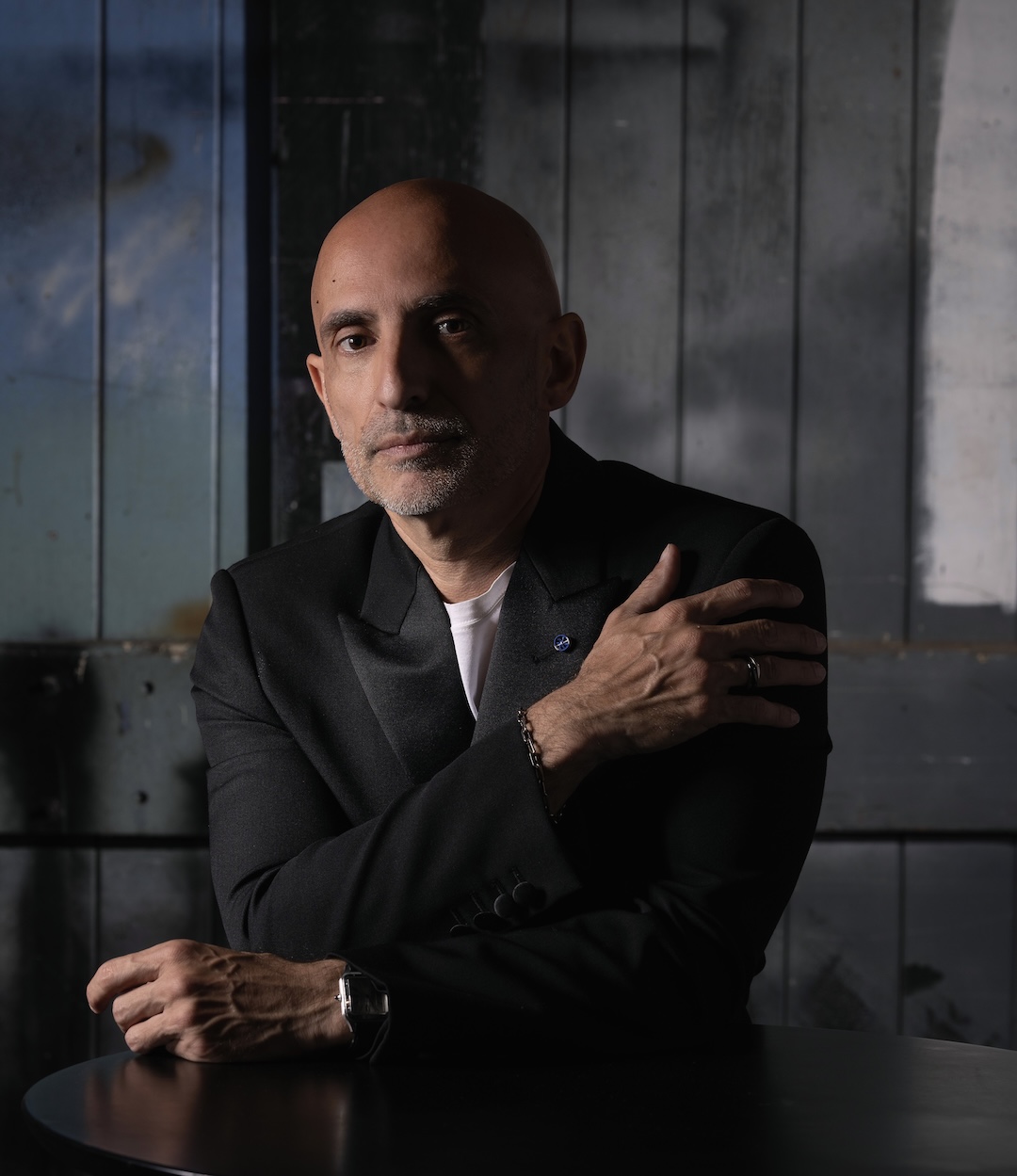
Continuum is described as “a bold exploration of the ever-shifting cadence that binds us to the world.” How did this idea of constant transformation influence your choreographic choices in Continuum?
I’ve curated this evening as an invitation for audiences to experience dance as an ever-evolving conversation—between past and present, between the individual and the collective, and between diverse artistic voices. My intention with this program is to spark connection, curiosity, and reflection, offering works that challenge, move, and inspire while revealing the transformative power of the body in motion.
Each choreographer brings a distinct perspective, yet all share a commitment to exploring the body in motion as a vessel for transformation. Through contrasting aesthetics, cultural resonances, and shifts in time, these works reveal how dance exists on a continuum—where moments build upon one another, find new meanings in fresh contexts, and affirm the enduring power of the human form to express what words cannot.
You’ve created the world premiere Spell within Continuum, which explores “the limits of emotional and physical expression.” What did you aim to conjure emotionally and physically through Spell, and how does it dialogue with the other works in the triple bill?
The title Spell itself suggests a duality—it can be something magical, but also something we fall under without even realising. Emotionally, I want to evoke an atmosphere that is at once intimate and volatile, where vulnerability and power exist side by side. There’s a ritualistic quality to the work, as if the dancers are caught inside a force they cannot quite escape—and it’s that tension which drives the movement and fuels the piece.
Within Continuum, Spell emerges as an intense, visceral heart—both contrasting with and speaking to the other works. While it shares the evening’s theme of transformation, it explores it through a lens of emotional ignition and fearless physicality.
In crafting Continuum, how did you balance moments of intimacy and expansiveness—especially when layering live elements like music and immersive lighting—to evoke that ebb and flow of life’s narratives?
In Continuum, each choreographer works with complete artistic freedom, without any direction from me. That independence brings out authentic contrasts and unexpected connections between the works. It’s this variety that invites audiences to engage on their own terms, discovering personal meanings and emotional threads that are unique to each viewer.
This triple bill seems to offer a journey through time and place—from twilight’s fleeting beauty to elemental breath. How do you want audiences to experience—and perhaps rethink—the relationship between movement, nature, and storytelling?
I always want audiences to come with an open mind and allow the experience to be unprescribed free to discover their own meanings and narratives. Dance has the unique power to be felt as much as it is seen, to resonate physically and emotionally in ways words can’t. I hope audiences leave with a renewed sense of how deeply movement is connected to the natural world, and how it can tell stories without language. Like nature, this evening is always in motion—emerging, transforming, and fading—so that each work becomes a landscape the audience can journey through, sensing their own place in the continuum of life
Looking ahead, does Continuum carve out a new direction or personal milestone for your artistic trajectory? What might this signal for your future choreographic explorations?
Continuum feels like both a culmination and a starting point. It gathers threads from my past work, my fascination with transformation, my love of collaboration, my search for emotional truth and weaves them into something that opens new doors.
Creating and curating this triple bill has changed how I see works interacting—how contrasting voices can strengthen shared themes. It’s inspired me to explore even more fluid boundaries between ideas, styles, and disciplines.
If it signals anything for the future, it’s that I’m interested in going further into that space where dance is not just movement, but an ongoing conversation—between artists, between forms, and between audiences and the world around them.
Continuum runs through November 1 at the Roslyn Packer Theatre.
You may also like.
Inside the $30 Billion Obsession Among the Ultra-Wealthy : A Race to Live Longer
The pursuit of an extended life has become a new asset class for those who already own the jets, the vineyards, and the art collections. The only precious resource left to conquer, it seems, is time.
If you want to know what the latest obsession is these days among the ultra-wealthy, listen in at dinner.
Once it was crypto, then came AI and psychedelics, now it’s longevity all the time. The talk is of biomarkers, NAD+ levels, and methylation clocks, of senolytics and stem cells. Guests compare blood panels like wine lists, and the most important name to drop is no longer your banker or contact at Rolex but your longevity physician. For those just arriving at the conversation, the new science can sound like science fiction—but it’s fast becoming the lingua franca of money.
The field has its own vocabulary—epigenetic reprogramming, which aims to reset cellular clocks; cellular senescence clearance, the removal of “zombie” cells that clog our systems as we age; precision gene therapies, designed to personalise interventions at the level of DNA—that sounds equal parts Brave New World and Wall Street pitch deck. But make no mistake: this is no longer a niche pursuit. The sector is already worth an estimated $30 billion globally and projected to surpass $120 billion within the decade, having attracted billions in investment from the likes of Altos Labs, Juvenescence and Google-backed Calico. Tech titans and old-money families alike are staking claims on the possibility of an extra decade or two. It’s a space where venture funds court Nobel laureates, hedge funds bankroll gene-therapy moonshots, and even wellness festivals in Australia draw rock-star scientists to the stage.
The Poster Child and the Pitch
David Sinclair, the Sydney-born Harvard geneticist who has become something of a poster child for the field, is quick to underline the stakes. “We’re not just talking about lifespan, we’re talking about health span,” he tells Robb Report. “Extending the number of years people live well—without frailty, without disease—isn’t just a medical breakthrough. It’s a social and economic one.” Sinclair, whose research ranges from NAD boosters to epigenetic age-reversal therapies, has calculated that adding a single year of healthy life to the US population, for example, could be worth $38 trillion in economic benefit—fewer years of costly aged care, less burden on hospitals, more years of productivity and compounding returns. In other words, the dividends of health are financial as well as personal. “That’s why governments and investors are paying attention,” he says.
Sinclair has become a fixture on the global circuit, drawing crowds that rival TED or Davos. As Radek Sali, the Australian entrepreneur behind the new Wanderlust Wellspring longevity festival taking place on the Gold Coast this October, where Sinclair is the keynote speaker, puts it: “Wellness has moved into the realm of entertainment.” At Wellspring, platinum-tier guests pay up to nearly $2,000 for the privilege of hearing scientists and investors share the stage over a weekend like headliners at Coachella.
Investing in Time
And then there are the sideshows. Bryan Johnson, the tech mogul turned human guinea pig, makes headlines with his open-source, organ-by-organ data tracking—his infamous “penis readings” have become cocktail-party fodder. While many dismiss him as a parody of the field, his multimillion-dollar project Blueprint has nevertheless made longevity impossible to ignore in the mainstream.
For the uninitiated, the science of longevity today is no longer about vitamin salesmen or fringe dietary regimes. This is the new frontier—one where biology is not just observed but engineered, and where investors smell opportunity on par with space travel. It’s little wonder that Altos Labs has raised billions to chase cellular rejuvenation, or that Juvenescence has secured more than $400 million to fast-track therapies. What was once the realm of eccentric tinkerers now attracts sovereign wealth funds.
“This body takes me to meetings, earns me money—why not invest time and money into it?”
The appeal to the One Percent is obvious. Longevity is a natural extension of portfolio thinking: diversify your assets, hedge your risks, and above all, maximise return on investment. Except in this case, the returns are measured in years of health, energy and cognition. As Andrew Banks, a Sydney-based entrepreneur and early investor in Juvenescence, explains: “This body takes me to meetings, earns me money—why not invest time and money into it?” His Point Piper home teems with contraptions—a Reoxy breathing machine, hydrogen therapy, red-light sauna, and he spends a few hours a day on maintenance, as if his body were a private equity stake.
Banks, like others in his cohort, is baffled that more wealthy men haven’t followed suit. “Entrepreneurs pride themselves on divergent thinking,” he says. “They expand, dream and create businesses with it. But when it comes to their bodies, they’re convergent—unimaginative. The lack of curiosity is astonishing to me.”
Medicine 3.0 and the New Rituals
Steve Grace, a Sydney-based entrepreneur and the proprietor of exclusive private networking club The Pillars, which is opening a longevity program, thinks there is a reckoning coming for those who do not take matters into their own hands. “As someone who has run a few recruitment businesses,” he says, “I can tell you that if you’re a man or woman in your 50s and working as an employee, even in a really good position, it’s time to get worried about job security and being aged out of the workforce. You have to make yourself as vital as possible and become the best version of yourself, or you’re toast.”

What was once fringe has now become a cultural necessity for those who can afford anything, with science finally catching up to ambition. Sinclair’s lab at Harvard recently published a study on the reversibility of cellular ageing—restoring vision in blind mice and setting the stage for human trials in conditions like glaucoma. In Boston, his company Life Biosciences will begin treating patients with blindness in a Phase I trial using partial cellular reprogramming early next year. “This isn’t science fiction anymore,” Sinclair says. “We’re at the point where we can reprogram cells, turn back their biological clocks, and restore function.”
Meanwhile, practitioners like Dr. Adam Brown of the Longevity Institute in the Sydney suburb of Double Bay are reinventing diagnostics. His “assessment menu” has been compared—only half-jokingly—to a Michelin Guide for medical testing: full-body MRI scans, continuous glucose monitors, polygenic risk scores. “What we do is proactive, not reactive,” he says. “Correct deficiencies first, then optimise health. That’s how you get peak performance in the short term and resilience in the long term.” Brown frames longevity in terms that would resonate with any investor: “There’s a short-term ROI—fixing glucose or sleep issues so you perform better tomorrow. And there’s a long-term ROI—functioning in your 70s as you would in your 40s. That’s extending your career, your income potential and your independence.”
“Once upon a time, male vanity meant injectables, veneers and a tan. Today, it’s VO2 max scores and continuous glucose monitor readouts.”
Peter Attia, the Canadian-American physician and podcast host who has helped popularise the concept of “Medicine 3.0”, echoes this emphasis. Medicine 1.0, according to him, was about surviving infections. Medicine 2.0 was about treating chronic disease. Medicine 3.0 is about staying ahead of decline: measuring, monitoring and intervening early. “The goal is not just to avoid disease but to lengthen health span,” Attia has said.
For those already converted, longevity is less about lab science than daily rituals. Sydney-based Chief Brabon, who trains CEOs like athletes, says: “These men are like Formula One cars—you don’t wait until the tyres are bald before swapping them. You keep everything tuned, precise, optimised.”
That tuning now involves more gadgets than ever: hyperbaric oxygen chambers, cryotherapy, sauna/cold-plunge circuits, peptide stacks, nootropics. And yes, a glut of supplements, some with evidence, others little more than wishful thinking. Once upon a time, male vanity meant injectables, veneers and a tan. Today, it’s VO2 max scores and continuous glucose monitor readouts. “Health is the new flex,” as Steve Grace quipped, glancing at his wrist-worn biometric tracker.
The New Flex: Health as the Ultimate Luxury
Still, there is plenty of scepticism. Some therapies are unproven, others prohibitively expensive. And there is the unavoidable fact that many leading scientists, including Sinclair, have stakes in companies producing supplements and therapeutics, raising eyebrows about conflicts of interest. “The difference,” Sinclair insists, “is whether it’s backed by peer-reviewed science and measurable biomarkers. If it can’t be quantified, it’s marketing, not medicine.”
Then there are the contradictions. It promises democratisation while often priced like a private club. It champions science but thrives on hype. It seeks to extend health span but risks deepening class divides. “Only if we let it,” Sinclair says when asked if longevity risks becoming the preserve of the wealthy. “Like antibiotics or aspirin, these advances should become widely available and affordable once they scale.” Sali agrees, but from another angle: “Biohacking doesn’t have to be expensive,” he says. “The blue zones prove that—community, diet, movement, purpose. Those are free. Wellspring is about making that knowledge accessible.”
And yet, for all its shortcomings, the movement is here to stay. Investment continues to pour in. Technology—like senolytic drugs that clear aged cells or AI-driven platforms that predict individual disease risk years in advance—is moving from speculation to clinical trial. Scientists are being recast as influencers. And the wealthy, always in search of the next advantage, have found in longevity a pursuit as old as alchemy, yet dressed in the language of venture capital. The truth is that health has always been an asset. What’s new is that it’s now being traded, optimised and measured like one.
In the end, longevity is less about a moonshot than about curiosity. Banks, Sali, Sinclair, Attia are all, in their own way, betting on time. Perhaps the most radical idea is also the simplest: that the best-performing asset in any portfolio is the body itself. Unlike Bitcoin, it carries you to meetings. Unlike art, it cannot be stored in a vault. Unlike real estate, it is non-transferable.
The new calculus of longevity is the recognition that the ultimate luxury is not wealth or status, but a few more decades of clear thought, strong bones and good company—and the ability to make money off it. Everything else, as one investor put it, is just a rounding error.
You may also like.
How Sailing Shaped Loro Piana’s Most Iconic Designs
Pier Luigi Loro Piana grew his family textile business into a celebrated fashion house by following his passion for sports on land and at sea.
The Regatta Connection
The race village at Port de Saint-Tropez is awash with people in nautical navy and white, the de facto dress code for the Loro Piana Giraglia regatta. This is the second year the fashion house has lent its name to one of the Mediterranean’s most prestigious summer races. The course zooms from the French coast to Genoa, Italy, taking a sharp turn past Giraglia, a small island off Corsica’s northern tip. It’s the latest in a long line of marine events the brand has sponsored, dating back more than 20 years.
The link between sailing and the brand—and more consequentially the Loro Piana family—is exemplified by the man Robb Report is here to meet: Pier Luigi Loro Piana. An avuncular figure in his 70s with the physique of a man who has enjoyed life, Pier Luigi fell in love with sailing in his late teens, when a family friend took him for a cruise in a sloop.
“Using the wind to go faster or slower, driving the boat like it has an engine, it’s really fascinating,” he says. Inevitably, he started competing. “When you’re sailing, you’re always looking for other boats to go and fight with. It’s an instinct,” he says. And then, with considerable understatement, “I think it’s a nice hobby.”
A Life Under Sail
He currently owns two boats: My Song, which you can see on these pages, is a 25 m sailing yacht that competed in the Regatta. There’s also Masquenada, a comfortable 50 m explorer. It’s a commendable set-up befitting a man who shaped one of Europe’s most celebrated fashion houses.
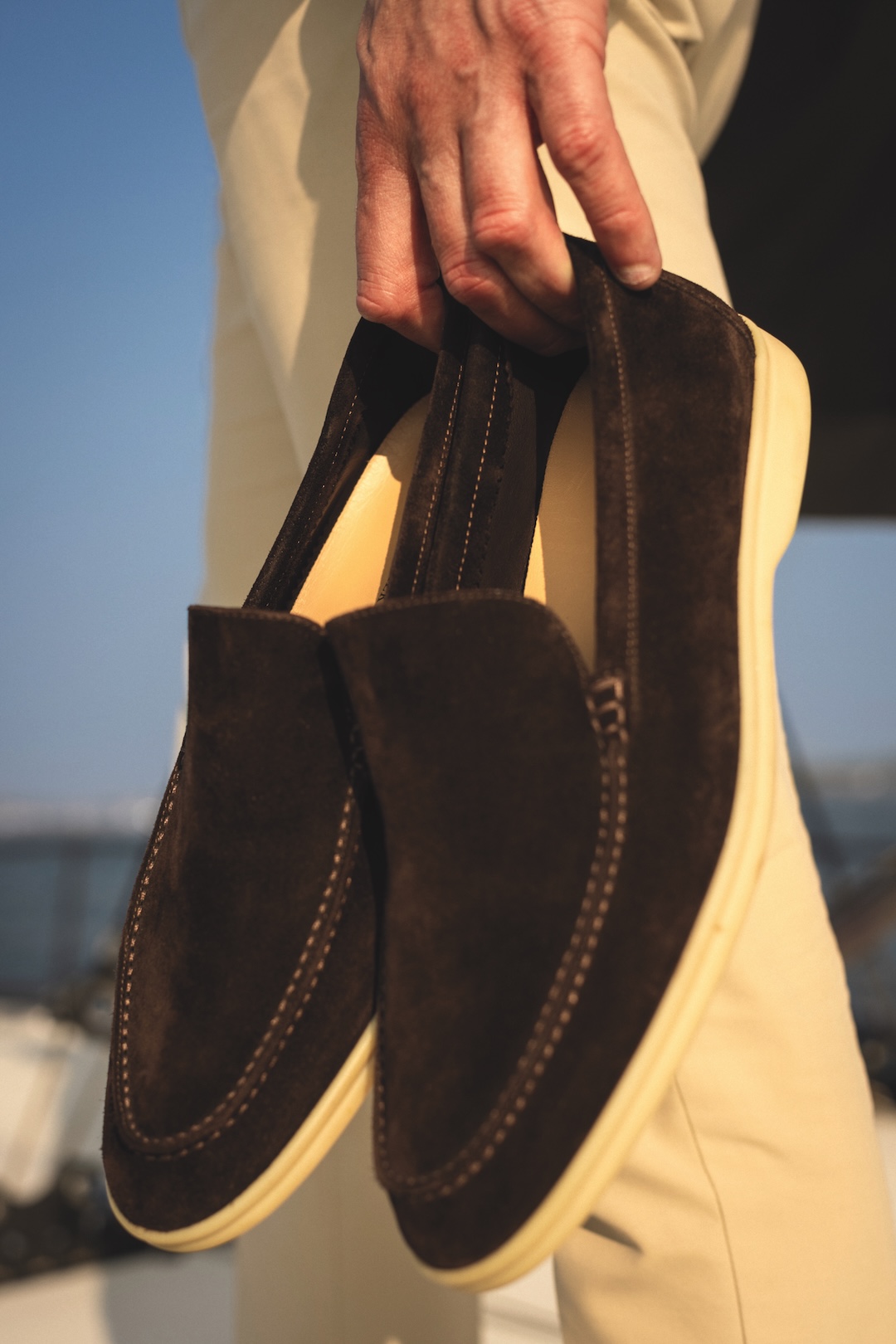
A Family Business Turned Global Powerhouse
The textile and clothing company that bears his family’s name was launched by an ancestor, Pietro Loro Piana, in 1924. A few generations later, Pier Luigi and his brother, Sergio, would run it for four decades until LVMH acquired a majority stake for around $4 billion in 2013. Sergio passed away that year; his widow and Pier Luigi still own a share of the brand between them.
The brothers proved innovative custodians, moving the company upmarket with an insistence on ultra-fine materials and groundbreaking fabrications. And the connection with sports—specifically yachting, horseback riding, skiing and golf—is integral to how the brand positions itself. As Pier Luigi recalls, such associations often had self-serving origins.
“These are the sports my brother and myself were doing,” he says. “We were very committed in business in the 1970s, ’80s, ’90s, so we were like our customers: people that like to work hard but also play hard. And that meant sports.”
Innovation Born of Necessity
This affinity often led them to develop durable, yet elegant, materials and gear for their off-duty pursuits, eventually offering versions to their athletic clientele. “We engineered products with unusual properties, natural fibres like wool or cashmere with a membrane that makes it waterproof and windproof… For research and development, I was the first victim,” he says with a chuckle. Once, he wanted a ski jacket that was “warmer, lighter, softer and better” than nylon models, so he made a prototype to test on the slopes. It gave birth to the Loro Piana Storm System, launched in 1994. The line’s wind-resistant waterproof wool and cashmere has since been used by brands around the world. “I still have this jacket,” he says.
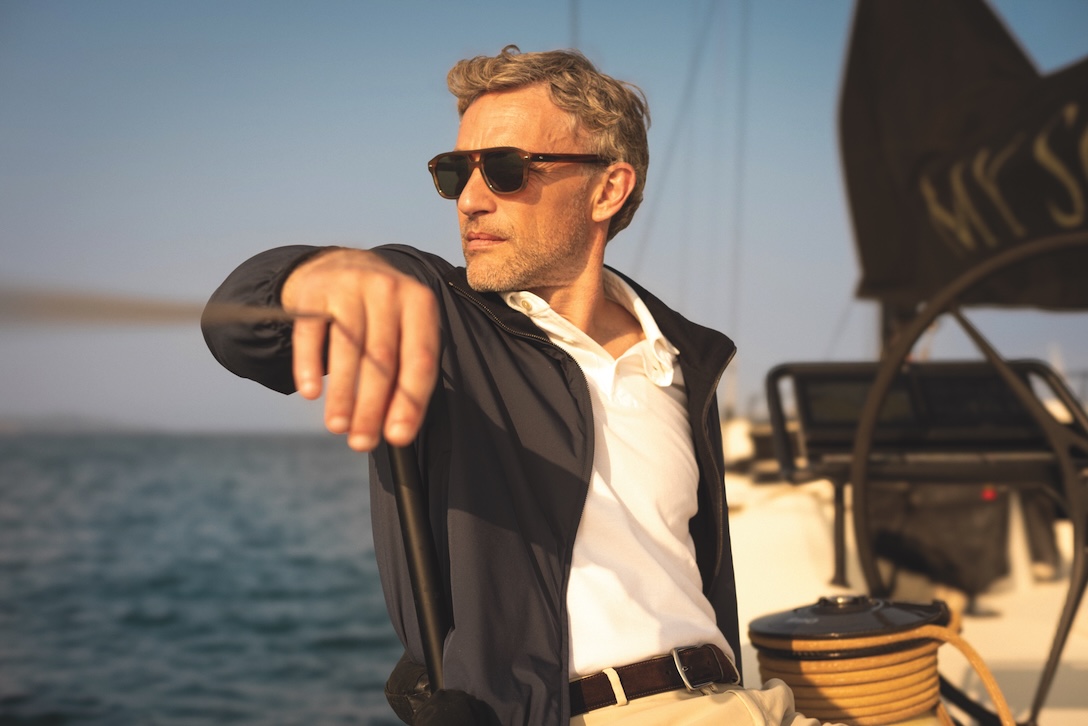
The same process happened on the water. A beloved reversible bomber, with knitted cashmere on one side and waterproof polyester on the other, was born from Pier Luigi’s need for a functional jacket to wear on his yacht. “It’s very light, doesn’t wrinkle, it’s warm, windproof,” he says. “It solves so many problems.”
He takes less credit for perhaps the brand’s most famous—and almost certainly most imitated—product, the white-soled suede Summer Walk loafers. “That was my brother,” he says. “When we were 20, 30 years old, we went sailing and there were only [Sperry] Top-Siders or Sebagos. But when the soles got worn, they got hard and slippery.”
The answer: a non-marking sole with grip—“like a tire you use in Formula 1 when it’s wet”—which Sergio got his bespoke shoemaker to sew to suede uppers. Eventually, they produced two versions: a loafer and the Open Walk, a model with a slightly higher top. “We discovered people were using them also for formal wear because they were so comfortable,” says Pier Luigi. “It’s really a successful story that started from product research.”
And if problem-solving can turn your family business into a giant of global style, clearly it pays to be a little selfish.
You may also like.
The Supercar of Pool Tables
In a rare fusion of Italian design pedigree and artisanal craftsmanship, Pininfarina and Brandt have reframed the barroom game as aerodynamic high art.
In the rarefied realm where leisure meets design, the latest object of desire doesn’t purr down the autostrada—it commands the room from a single sculptural base. The Vici pool table, a collaboration between Italian automotive legend Pininfarina and Miami’s bespoke table-maker Brandt Design Studio, reimagines the game with the same aerodynamic poise and artisanal precision that have graced some of the world’s most beautiful vehicles.
Named for Julius Caesar’s immortal boast—“Veni, vidi, vici”—this limited-edition series transforms billiards from casual diversion into a declaration of style. Every curve is deliberate, from the ultra-thin playing surface clad in tournament-grade Simonis cloth to the seamless integration of Italian nubuck leather and precision-milled metals. The effect is more haute sculpture than barroom pastime—yet it meets exacting professional standards.
For the true connoisseur, the debut PF 95 Anniversario edition celebrates Pininfarina’s 95-year legacy in just 95 numbered pieces. Finished in dark-blue lacquer with rose-gold accents and a flash of red felt, each table is discreetly nameplated—a tangible claim to an heirloom in the making.
“It’s not just about how it plays—it’s about how it lives in a space,” says Dan Brandt, the master craftsman whose work has long graced the world’s most exclusive interiors. Whether anchoring a penthouse salon, a members’ lounge or the main deck of a superyacht, the Vici is designed to stir conversation before the first break.
For those accustomed to Pininfarina’s sleek automotive silhouettes, this is a chance to bring that same lineage of movement, form and Italian refinement into the home. Only now, the horsepower is measured not in engines—but in the geometry of a perfect shot.
From pool to midcentury to Ottoman, we’ve got all the table angles covered at Robb Report Australia & New Zealand —plus more home-worthy pieces.






